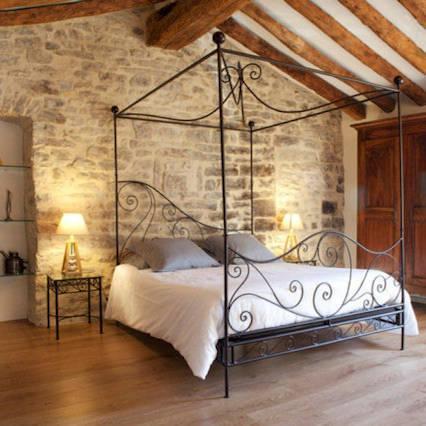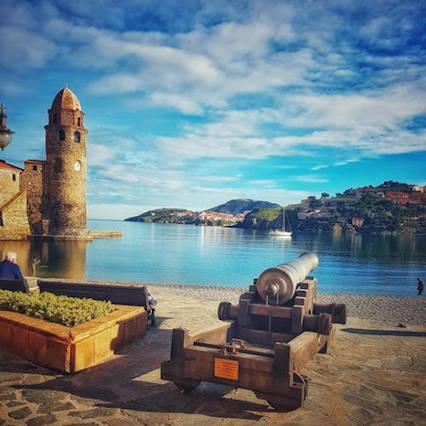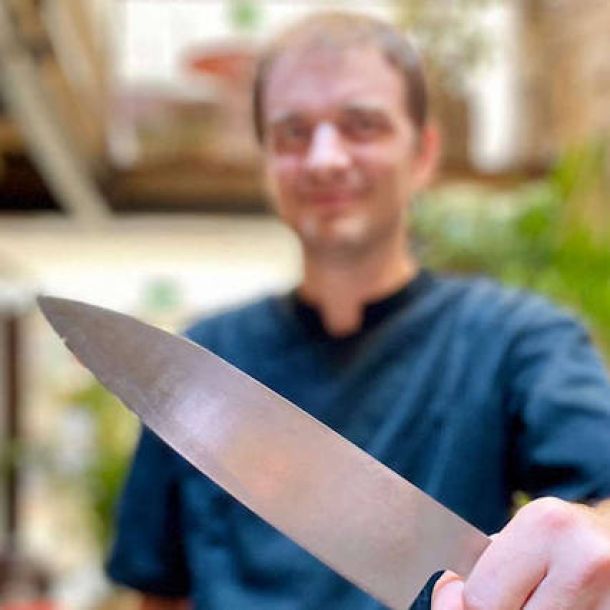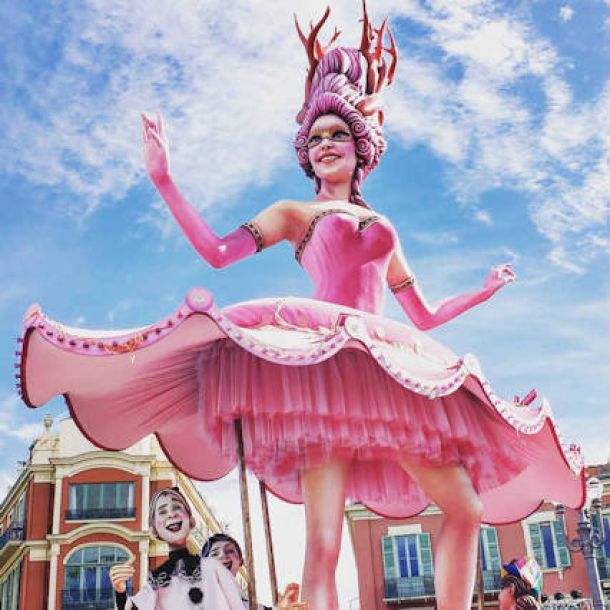- Last updated on .
- Hits: 13064
A travel guide to Nimes: ancient Roman city in South France
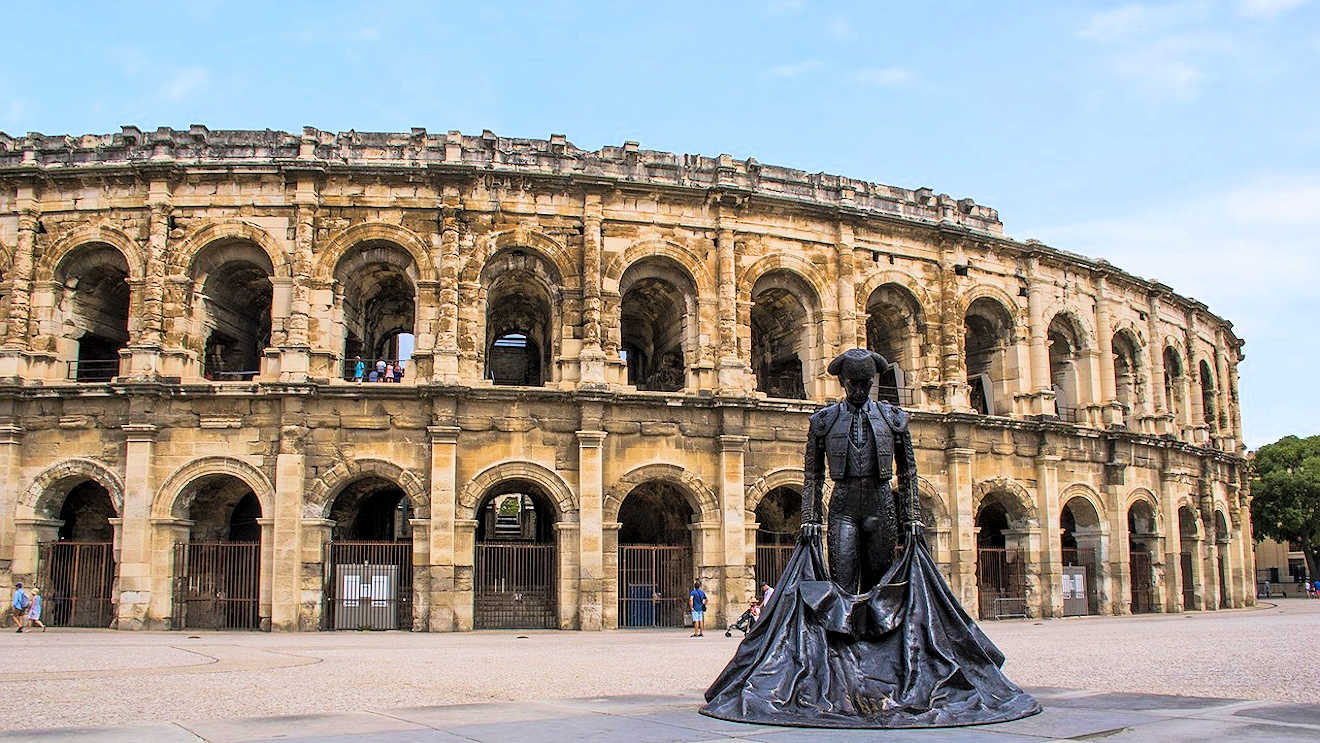
The historic Southern France city of Nimes will always be linked with two things: Romans and Denim jeans. Its location on the Via Domitia - the main chariot route from Spain to Rome - helped make it a favourite with a series of Emperors. Today it is endowed with an outstanding collection of monuments including the Maison Carrée, the Amphitheatre and the Temple of Diana. During the middle ages up until the late 19th Century, Nimes also forged a wealthy trade as a textile centre, including its famous blue cotton cloth "de Nimes" (thus later "denim") that was imported to America by Levi Strauss for use as clothing for working men.
Although often over-shadowed by its larger neighbour of Montpellier just 50 kms down the road, it is true that in the last 12 months Nimes' star is definitely in the ascendency. In 2023, UNESCO awarded Nimes World Heritage status for the old Roman forum in the centre of the city (Maison Carée). Then in early 2024, the Daily Express in the UK voted Nimes as the the Best place to visit in Europe in 2024 [Source: Daily Express]
History of Nimes, South of France city
Nimes owes its origins to the Julius Caesar's defeat of Mark Anthony and Cleopatra in Egypt. He rewarded his soldiers by building Nemausus - a grid like city on the Via Dormitia - where the veterans retired after active duty. In honour of their famous victory, the soldiers adopted the symbol for the town of a crocodile (the Nile) chained to a palm tree. Wherever you go in Nimes you will see this symbol - on the streets, on fountains and on buildings.
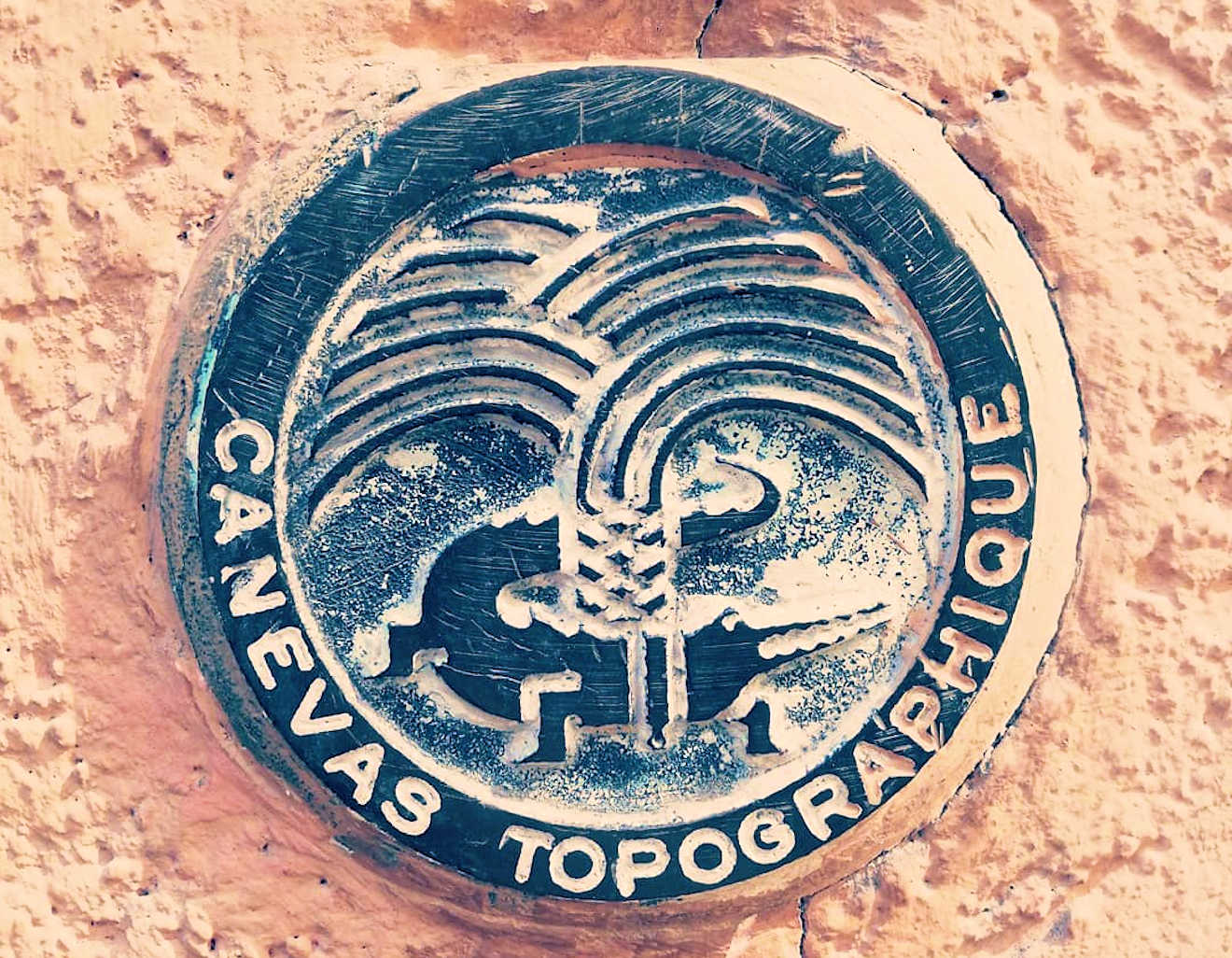
As the town grew, its demand for water to fill its Roman baths and to irrigate the town, outstripped its own spring water supplies. As a result and with typical Roman single-mindedness, they built a 50km canal to bring water from Uzes. Along the route they constructed the fabulous Pont du Gard aqueduct over the River Gard (see Pont du Gard for more information). Apart from the obvious question of how the hell did the Romans build an aqueduct 48 metres high and 183 metres long (without any cranes), the thing that I find absolutely staggering, is that over the 50km route of the Canal there is just a 17m drop from the source of the water at Fontaine d'Eure near Uzes and its arrival at the castellum divisorum in central Nimes. In some sections, the gradient of the canal is just 1cm every 200m. I think even modern day Engineers would struggle to achieve that level of accuracy.
After it was built, this canal network served Nimes with sufficient water for over 3 centuries.
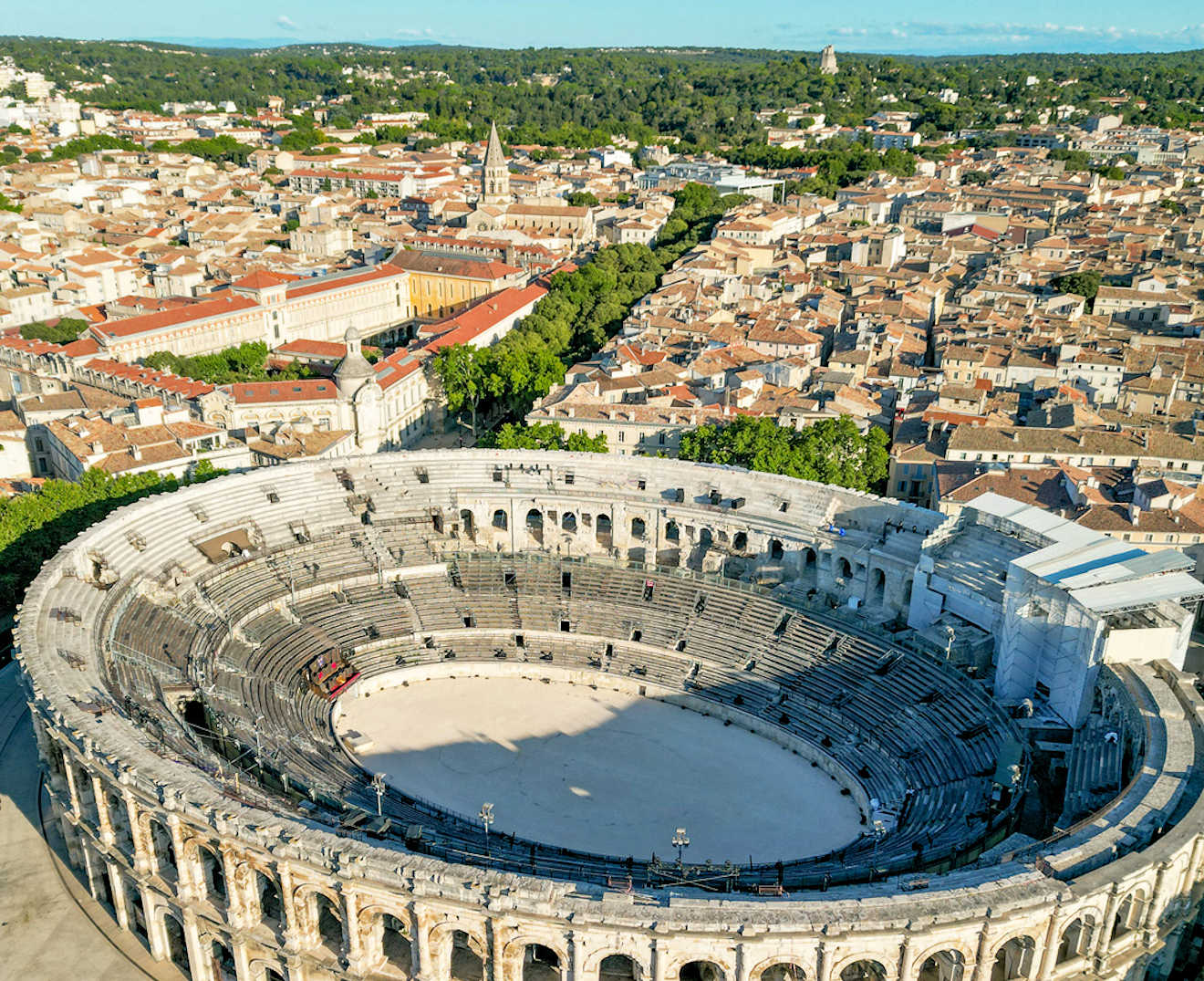
With the decline of the Roman Empire, Nimes took a similar decline. It was conquered firstly by the Barbarians and then by other tribes. During the late Middle Ages, Nimes became an important centre for Protestantism, until this was stamped out by the Wars of Religion (1562 to 1598). The cathedral in Nimes was destroyed twice during the 1500s and was later rebuilt in 1646. The protestants or Huguenots were dominant in the wool and textile trades and many Merchants had converted to Protestantism (partly due to the imposition of additional taxes by the Catholic King of France). In 1567, the local Protestants led a Coup d'Etat, which resulted in 37 prominent Catholics being executed. The reprisals from the French crown were swift and severe and this resulted in large groups of Huguenots going into hiding in the nearby Cevennes region and eventually emigrating to the Netherlands, England, Germany, Switzerland and Scandinavia. It is estimated that almost 200,000 French protestants left France between 1680 to 1710, with over 50,000 moving to England. At the time, the city of London had a population of just 500,000, so this represented a significant migration.
After the French Revolution, Nimes built itself an important prosperity by spinning silk and cloth. One of Nimes famous sons is Jean Nicot, who first introduced tobacco into France in the 16th Century and who spawned the term "nicotine". During the late 1980's and 1990's, Nimes underwent another renaissance under two charismatic Mayors, who embarked upon a period of reconstruction - delivering the Carree d'Art (Norman Foster) and Philippe Starck's Arbibus open space.
Nimes: the Town
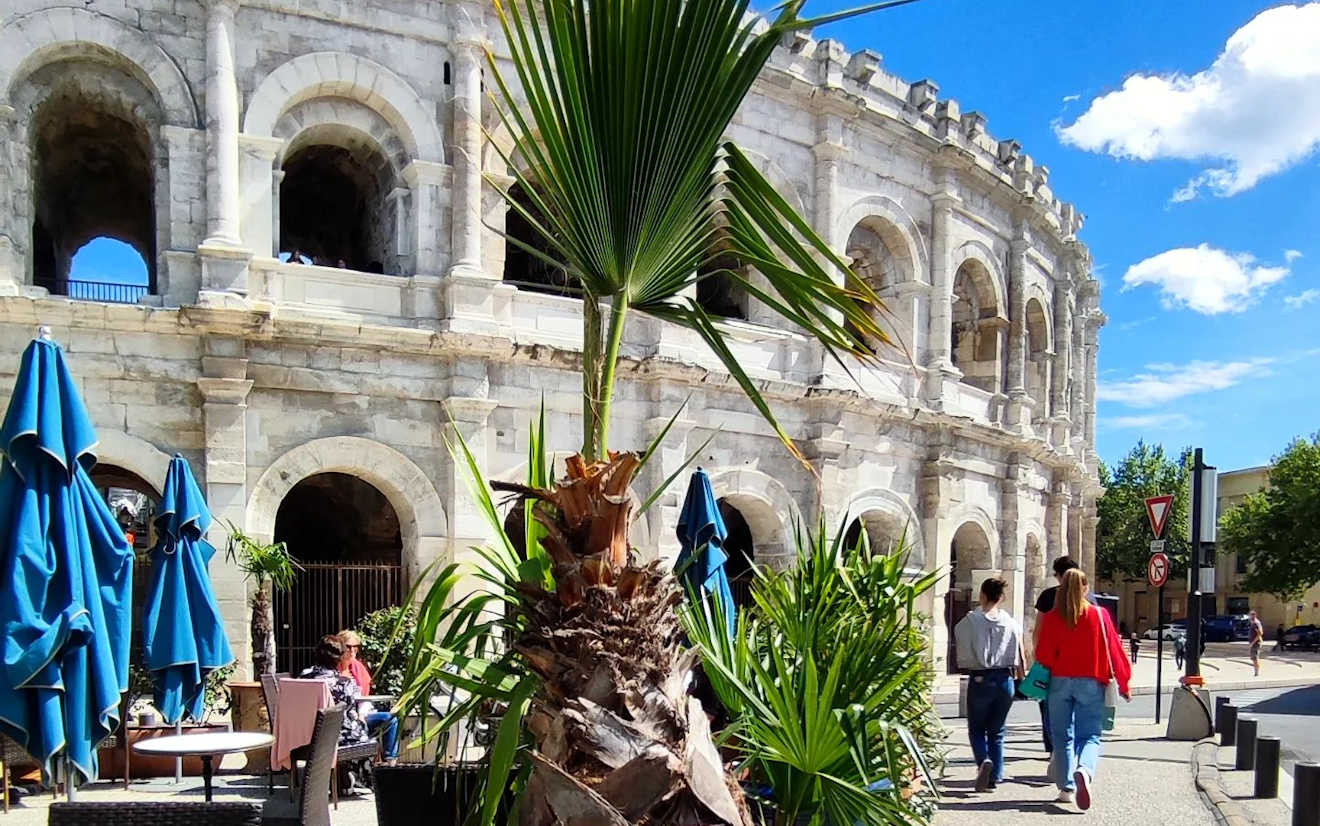
The outskirts of Nimes always reminds me of some Midwest American town, full of bowling alleys, fast food restaurants, car showrooms and industrial units. The centre of Nimes however is a total contrast. It is home to a bustling commercial district, with winding streets, hiding a plethora of boutiques and artisanal shops. It is very much a walking city - the centre is a lot smaller than you imagine - and all the sites are close at hand.
Nimes also houses two good art galleries and hosts some of the most colourful festivals in the South of France - February's Carnival and the Ferias of Pentecost and September. During the summer months, Nimes also hosts a regular food & wine festival every Thursday night (Jeudis de Nimes) which has a really happy party atmosphere (without the carnage of the Ferias).
Maison Carrée
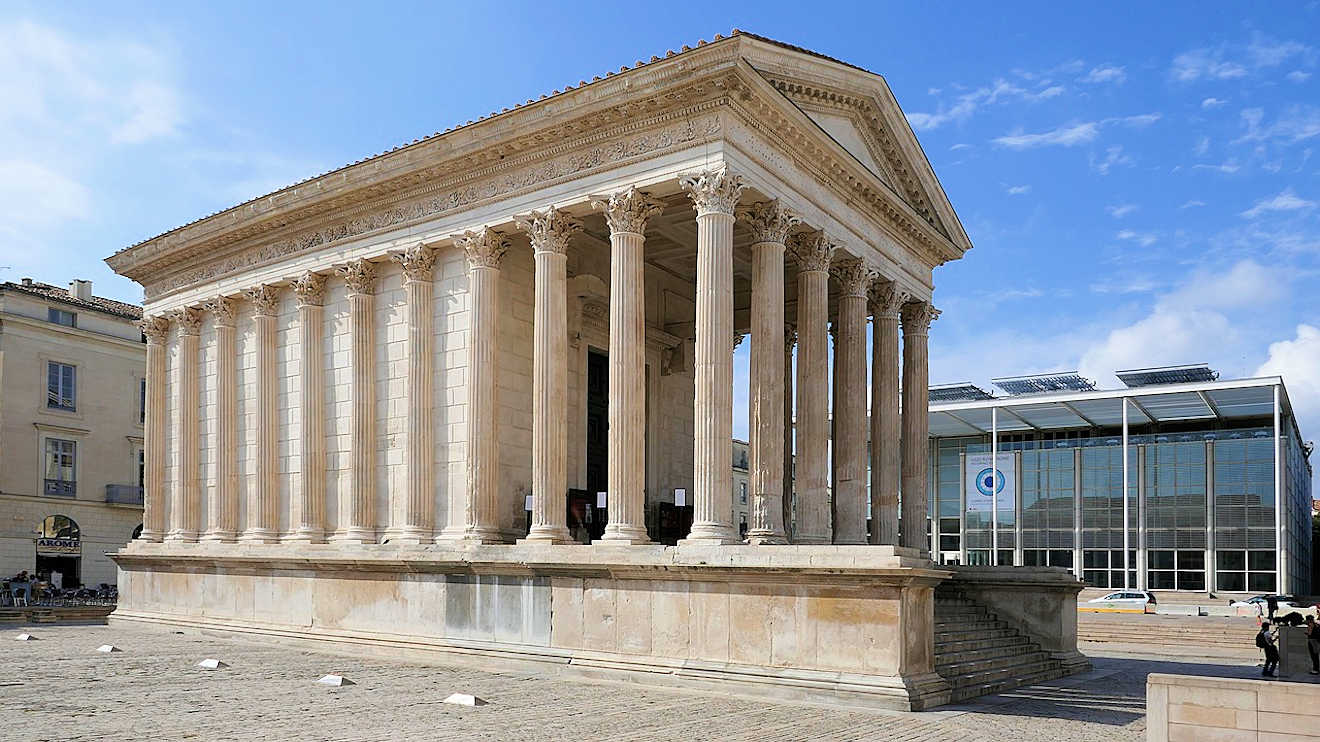
Maison Carree (or "square house") is a perfectly formed temple that was once the centrepiece to Nimes' forum. It was built in 4AD at the intersection of two major Roman roads (one leading to Spain - the via Dormitia - the other going north to Germany and Britain) and was dedicated to Emperor Augustus' adopted grandson. Maison Carree is regarded as the world's best preserved Roman temple and despite its patchy history over the years (it was once used as a stable in the middle ages) it has been cited as inspiration for Thomas Jefferson's Virginia Capital building and the Magdalene Church built by Napoleon in Paris.
In 2023, the Maison Carrée was added to the Unesco World Heritage list. The well-preserved temple becomes France’s 51st World Heritage site, joining the nearby Pont du Gard close to Uzes and the Roman monuments of Arles.
This was the second application that the city of Nimes made to the UNESCO World Heritage convention for the inclusion of the Maison Carée. An earlier application in 2018 was rejected on the grounds that there were too many modern buildings close to the monument. This to me is slightly baffling, because as you can see in the photo above, the fact that you have the ultra-modern Carrée d'Art in the background, it really accentuates the the view of the Maison Carrée. It really becomes the focal point of the square. Yes, there are plenty of pavement bars ringing the square, but at least people are able to see the Maison Carrée, it is not hidden away. It doesn't become some crumbling ruin.
Inside Maison Carrée you will find a small museum, providing details and excavations of the building itself.
Carre d'Art
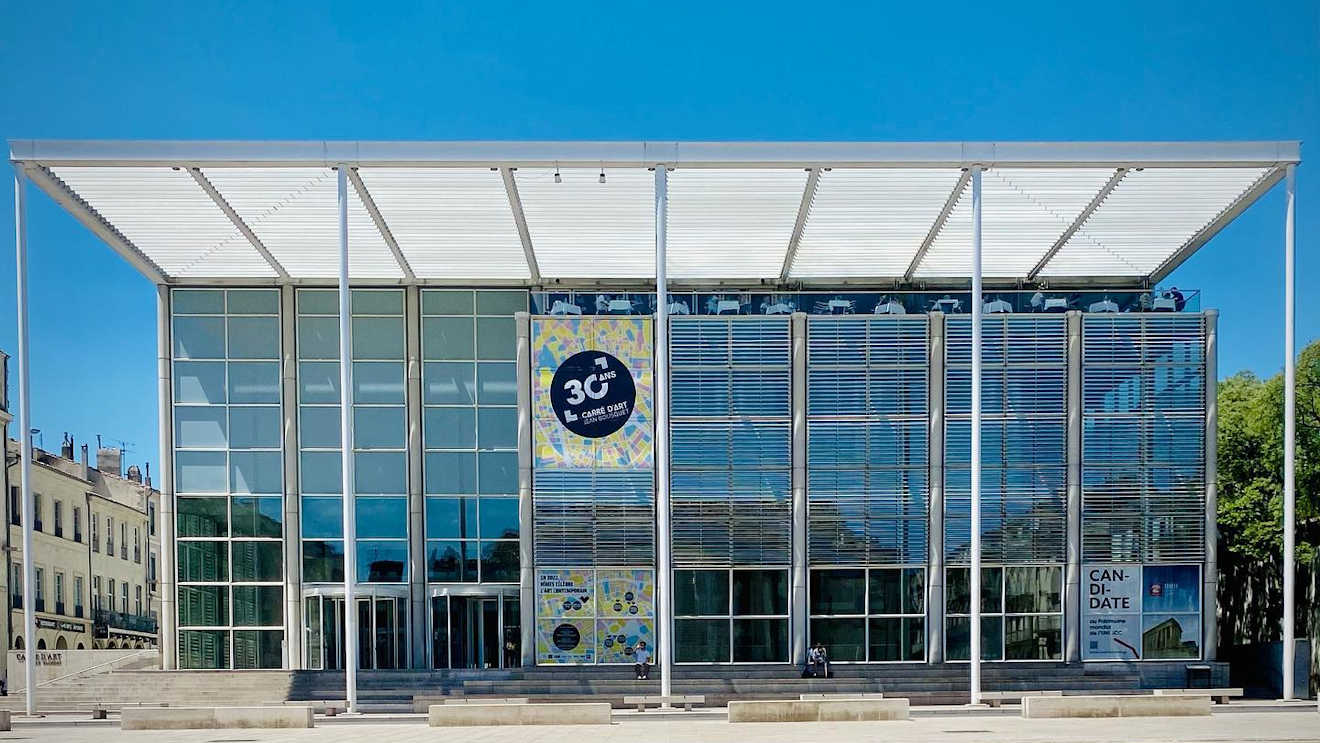
The Carre d'Art was designed by Sir Norman Foster and sits opposite the Maison Carree. It is quite a striking building, as you would come to expect from Foster, and surprisingly it compliments Maison Carree quite well. Carre d'Art is home to a library and the top two floors are taken over with the Musee d'Art Contemporain, featuring numerous works by French and European artists of the last 4 decades.
The exhibition spaces comprise a surface area of almost 2,000 m².
Arenes: Roman amphitheatre
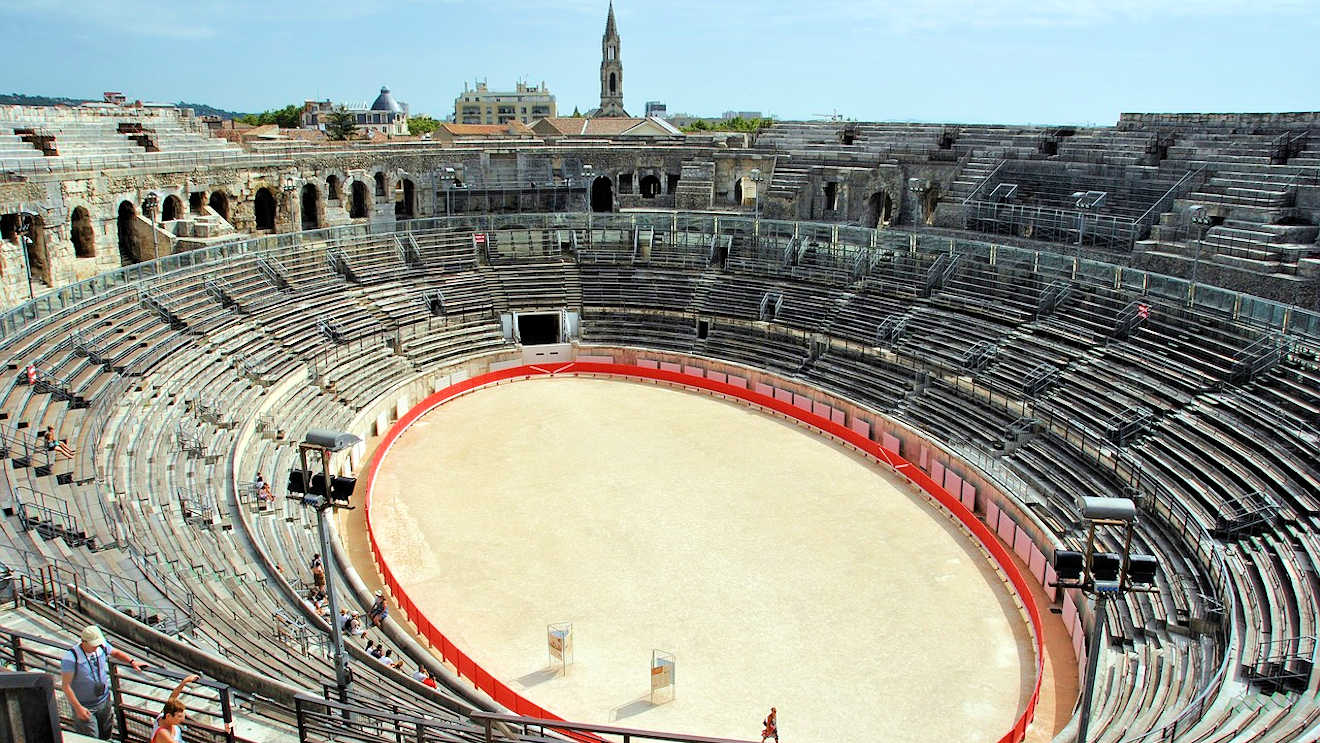
Nimes own amphitheatre is probably the most well-preserved Roman amphitheatre in the world. Built in the 1st Century, the amphitheatre is 133m long, 101m wide and 21m high. It still holds 21,000 spectators for bull fights, dance festivals and rock concerts. After the city was taken by the Barbarians the Amphitheatre was used as a fortress. After the 12th century when Languedoc was incorporated into France, the amphitheatre fell ino disrepair and became the site of a small village situated within the walls of the arena. It was only in 1786 when a group of scholars persuaded the city authorities to demolish the 200 houses and 3 churches and forcibly remove the inhabitants that the arena was restored to its previous magnificence. Now a modern roof has been created to enable the amphitheatre to be used as an indoor stadium during the winter as well as the summer
Porte d'Auguste
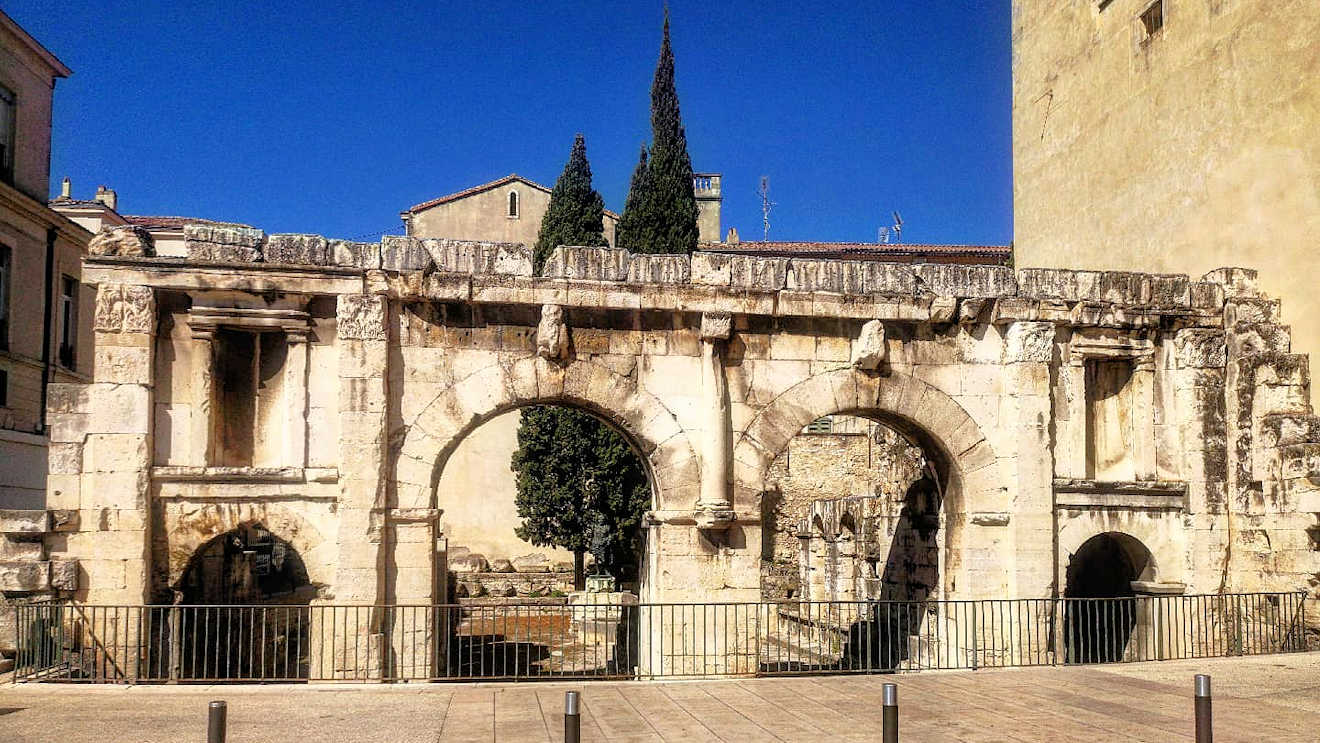
Porte d'Auguste is an amazingly well-preserved gateway that was once the entrance-way into the city from the via Dormitia. The larger archways were used by chariots, the smaller arches for pedestrians.
Temple of Diana
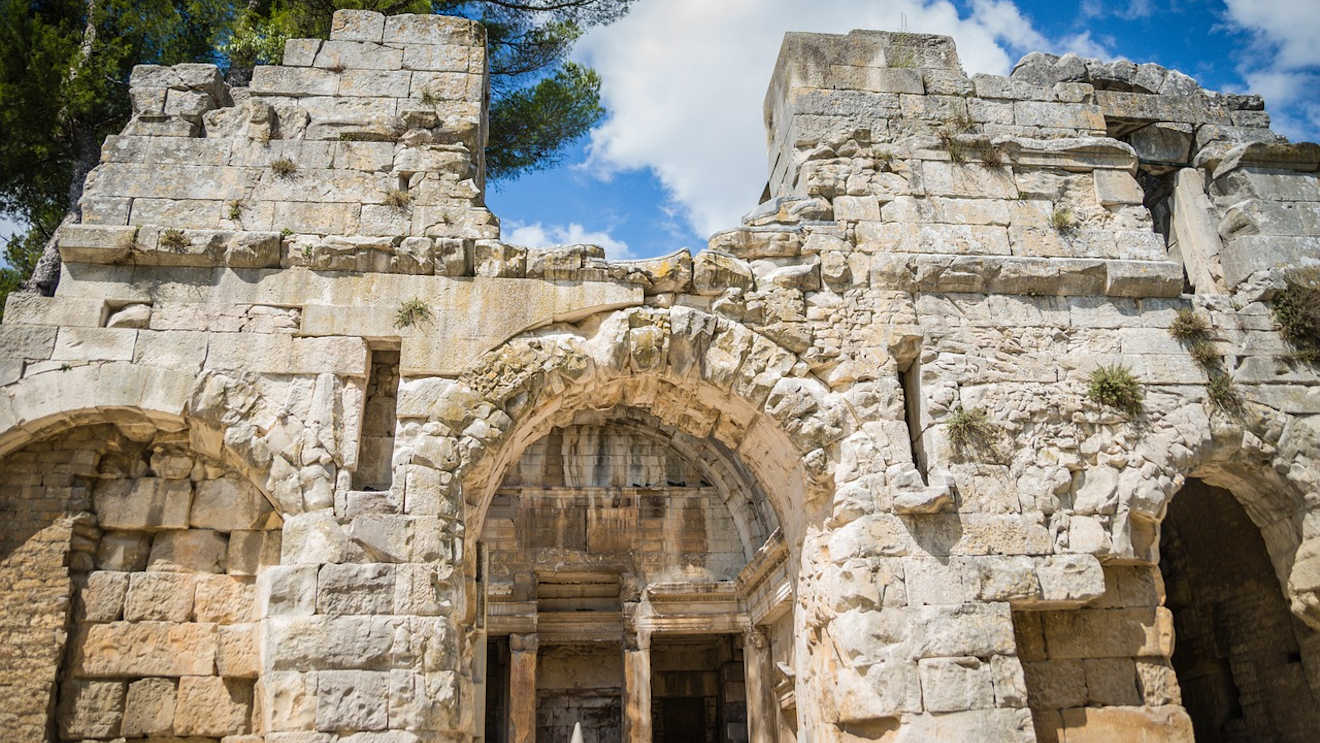
In the 18th Century, Nimes' textile merchants created a fund to pay for the renovation of stagnant pond that was once the site of the freshwater spring that first led to Nemausus (the original Roman settlement of Nimes) being founded on this spot. When the engineers started work on the site, they were amazed to discover an extensive temple complex around the site. This led to further appeals for public donations to create France's first public garden - Jardins de la Fontaine - with wonderful neo-classical statues and walkways. Don't expect to see anything as near as complete as the Maison Carree. The only thing you can see of Temple of Diana today is some arches and ruined walls situated in the beautiful Jardins de la Fontaine. This is a shame because the original temple remained in tact up until the middle ages and was used by Benedictine monks as a place of worship. But it was ransacked by Hugenot mobs during the Protestant uprising in 1704.
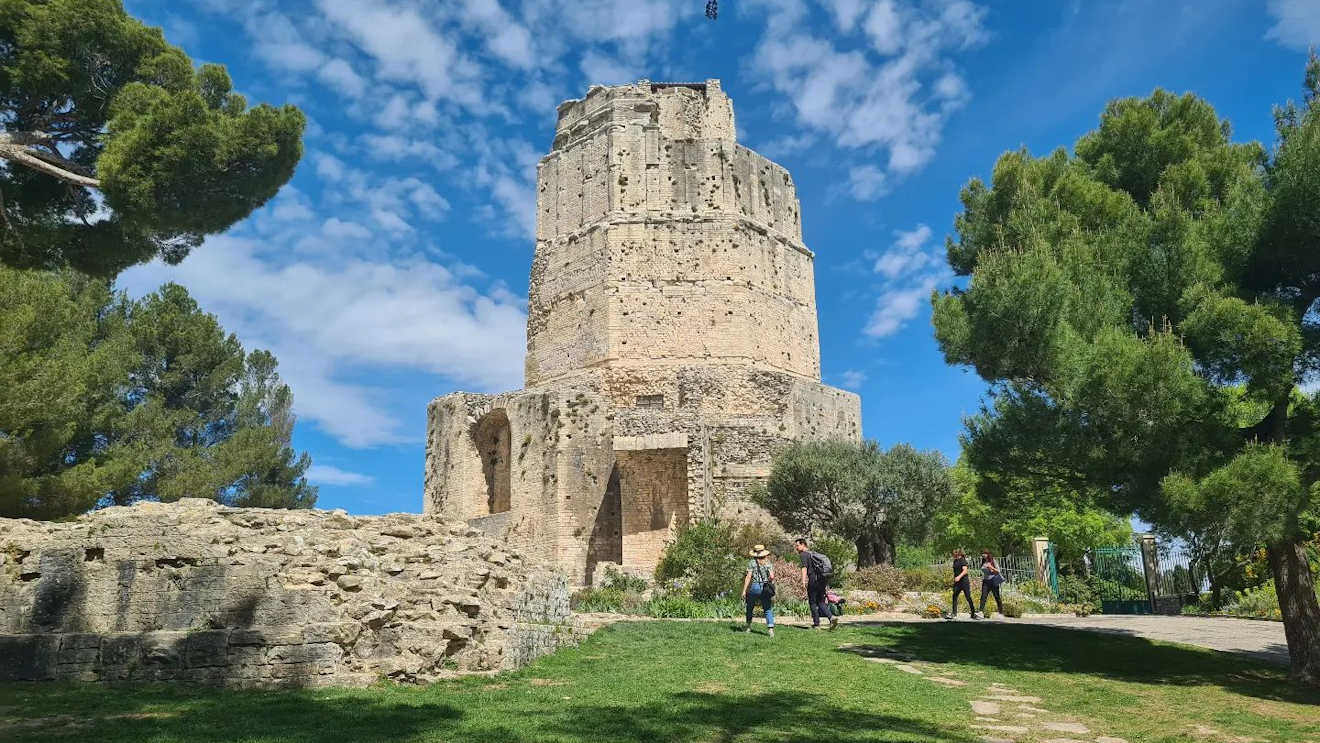
Up above the Temple, is the oldest remaining Roman monument in Nimes, the Tour Magne, a 34m tower which nobody has ever figured out what it was ever used for (various scholars have guessed at it being used as a watch tower, an observatory and a water tower - answers on a postcard).
Nimes Ferias
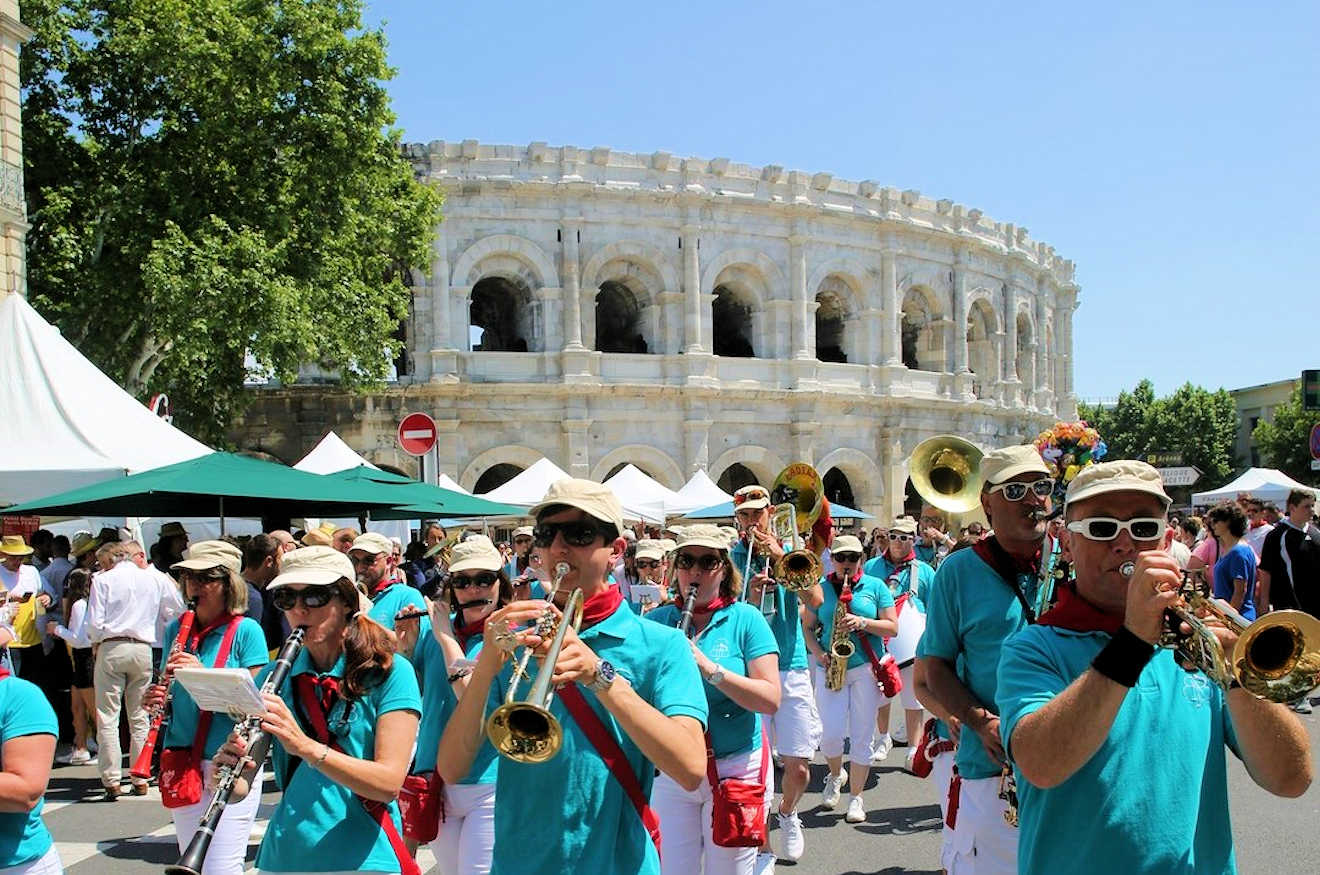
The most important dates in Nimes' annual calendar are reserved for its famous ferias. These are lively street parties, with music and tauromachie (bull fighting). Nimes has not one, but three ferias - Primavera in February; Pentecote (seven weeks after Easter); and des Vendanges in mid-September. During the ferias the streets and bars throng with revellers, important dance festivals take place and elaborate costumed processions wind their way through the old town. The focal point as always though is in Les Arenes, where the biggest bull fighting contests in the South of France take place. It is almost impossible to find accommodation in Nimes during the ferias.
Pont du Gard
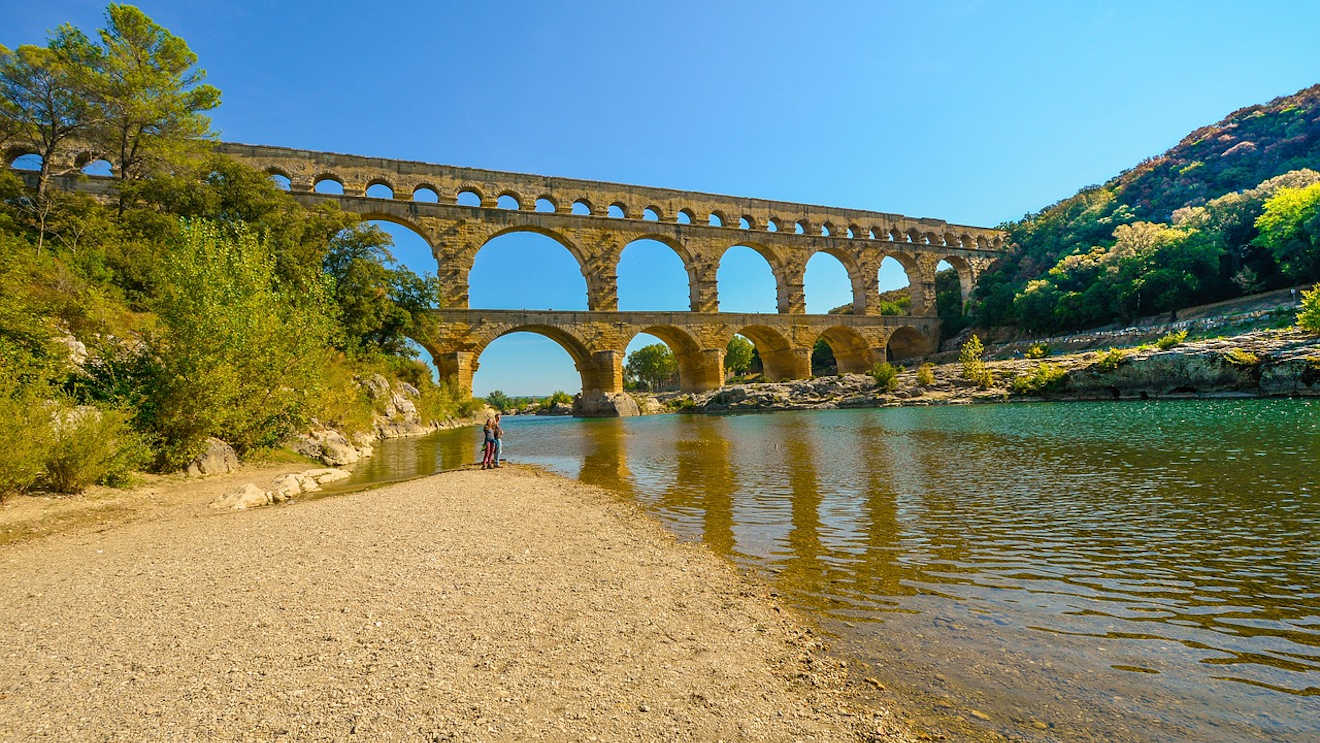
About 15kms north of Nimes is the wonderful Pont du Gard. This magnificent aqueduct built by the Romans to carry water from Uzes nearly 50km away is well worth a visit. See our article on Pont du Gard for further information.
Nimes travel guide
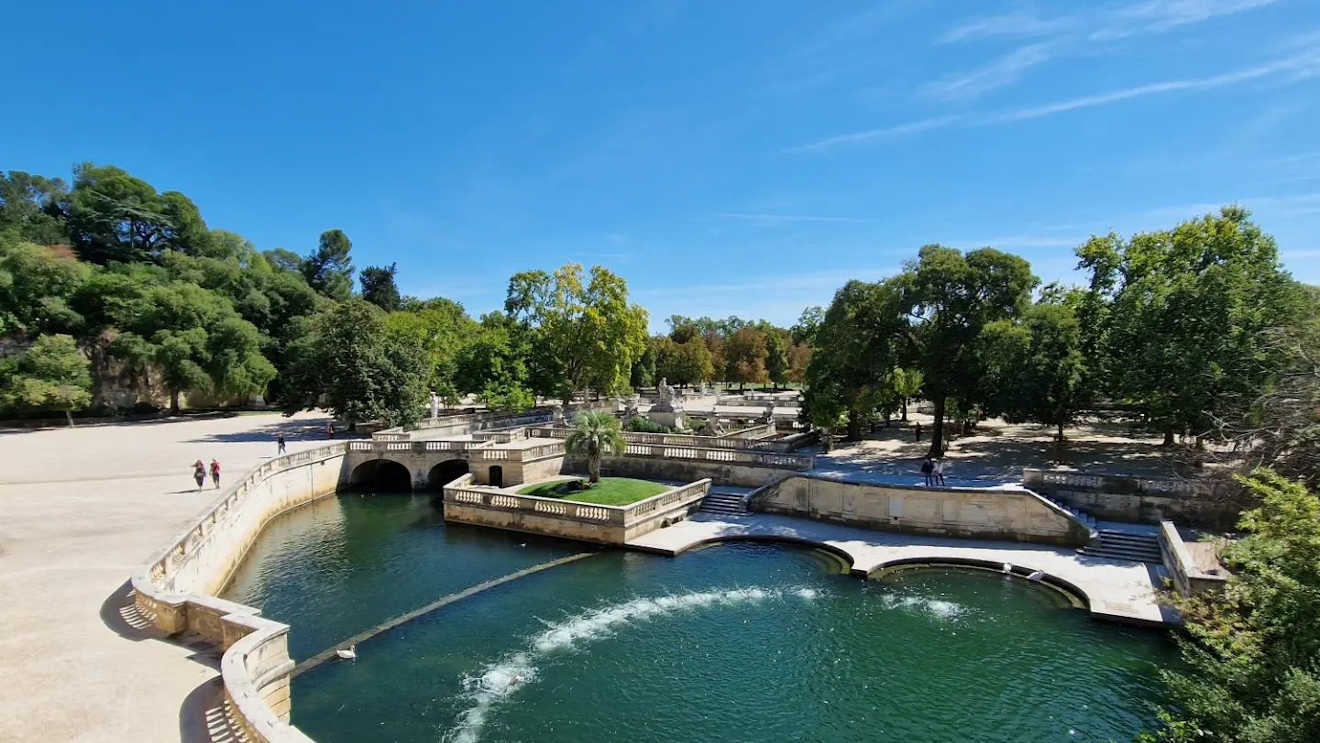
So that is it really. Nimes, a city with a wonderful past and a vibrant present. Scruffy on the outside, beautiful in the middle. My best memories of Nimes are from walking around the old streets, looking in shop windows, taking pictures of the monuments and shopping in Les Halles - the old food market with its modern shopping centre extension. I would also add that I find the inhabitants of Nimes to be the happiest and most fun-loving in the South of France. Not being a bull-fighting fan myself I can't quite get into the tauromachie atmosphere, but I can imagine that if you were to visit a bull fight, then Nimes would be the place to do it.
If you were looking for a good day out in the South of France with the family, I would recommend Uzes for a late breakfast, the Pont du Gard for a picnic in the afternoon and Nimes for an evening stroll and dinner.
Go Languedoc has a nice selection of houses and gites to rent close to Nimes. Nimes is a good base for a holiday in Languedoc. From Nimes you can easily reach Provence, the Camargue, the Mediterranean beaches, Arles, Avignon, Uzes, Sommieres and other picturesque Languedoc sites. See Nimes Villas for further details

